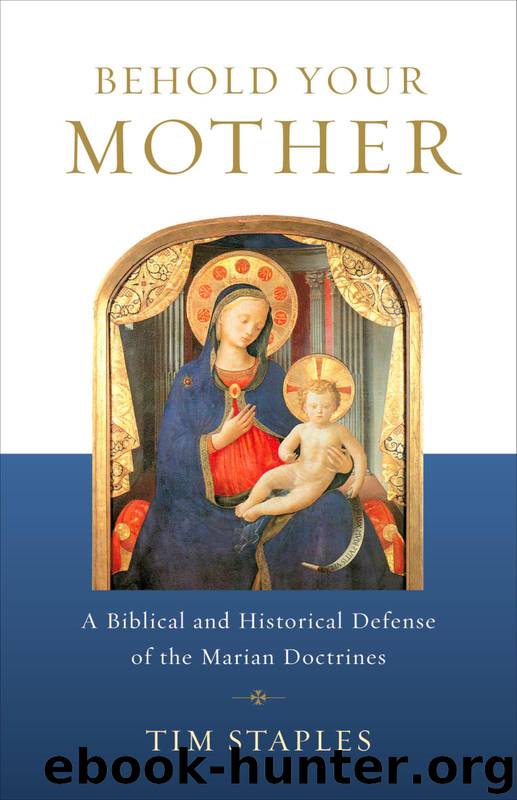Behold Your Mother by Tim Staples

Author:Tim Staples
Language: eng
Format: mobi, epub
Publisher: Catholic Answers Press
Published: 2014-10-07T07:00:00+00:00
The “Septuagint-Conditioned” New Testament
The answer to the above is a definitive yes. In the Septuagint (the Greek translation of the Hebrew scriptures, often abbreviated as LXX), we have multiple examples. Leviticus 10:4 uses a form of adelphos to refer to the cousins of Moses and Aaron. In 1 Chronicles 23:22, the cousins of the daughters of Eleazar are called adelphoi. And in Tobit 7:2–4 we have forms of both anepsios and adelphos used as synonyms within two verses of each other: “Then Raguel said to his wife Edna, ‘How much the young man resembles my cousin Tobit!’ . . . So he said to them, ‘Do you know our brother Tobit?’”
The Septuagint was translated over a considerable period of time, from ca. 250 B.C. until ca. 100 B.C.240 The first books translated were the Torah and then the writings of the prophets. Because Tobit was not even written first in Hebrew or Aramaic until ca. 200 B.C.,241 we know it would have been one of the later translated books to be added to the Septuagint, in ca. 140–100 B.C. The translators of the LXX could have used anepsios or sungenis for cousin; and, in fact, at times they did. However, they obviously did not have to do so. They chose to use adelphos as well—for cousin or relative as well as for brother.
To his credit, Eric Svendsen responded with what appears on the surface to be a compelling rejoinder to a similar point made by Karl Keating in Catholicism and Fundamentalism:242
Download
This site does not store any files on its server. We only index and link to content provided by other sites. Please contact the content providers to delete copyright contents if any and email us, we'll remove relevant links or contents immediately.
Resisting Happiness by Matthew Kelly(3300)
The Social Psychology of Inequality by Unknown(2935)
Day by Elie Wiesel(2716)
Designing Your Life by Bill Burnett(2667)
The Giving Tree by Shel Silverstein(2285)
Human Design by Chetan Parkyn(2028)
Angels of God: The Bible, the Church and the Heavenly Hosts by Mike Aquilina(1932)
The Supreme Gift by Paulo Coelho(1899)
Jesus of Nazareth by Joseph Ratzinger(1766)
Hostage to the Devil by Malachi Martin(1757)
Augustine: Conversions to Confessions by Robin Lane Fox(1736)
7 Secrets of Divine Mercy by Vinny Flynn(1688)
Dark Mysteries of the Vatican by H. Paul Jeffers(1672)
The Vatican Pimpernel by Brian Fleming(1663)
St. Thomas Aquinas by G. K. Chesterton(1603)
Saints & Angels by Doreen Virtue(1577)
The Ratline by Philippe Sands(1506)
My Daily Catholic Bible, NABRE by Thigpen Edited by Dr. Paul(1463)
Called to Life by Jacques Philippe(1454)
